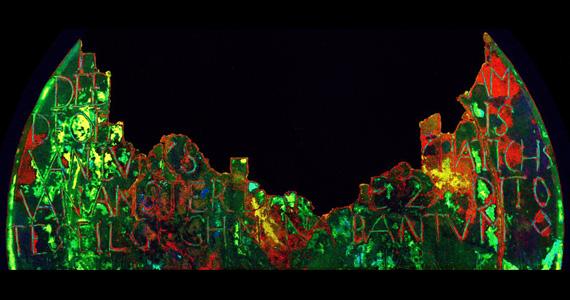
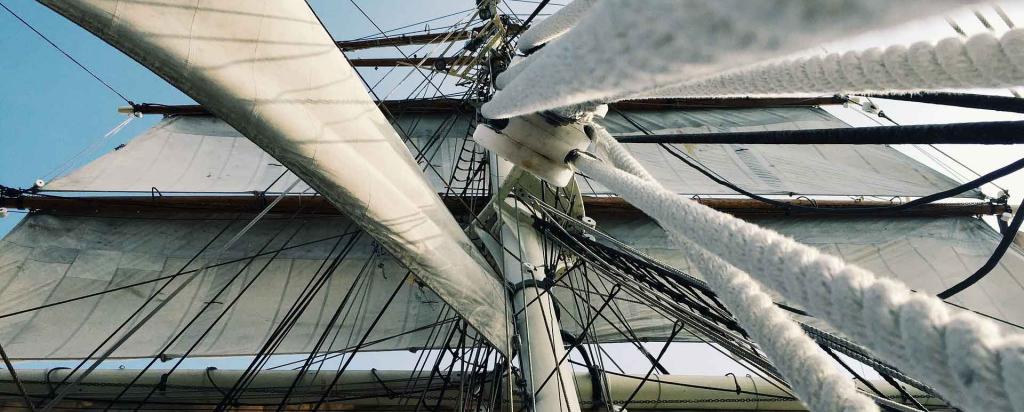
Published on the 5th March 2018 by ANSTO Staff

X-ray fluorescence scan image showing elemental distribution of bismuth (red) lead (green) and germanium (blue)
Recently an advanced X-ray imaging technique was used on a historic pewter plate linked to the early exploration of Australia by the Dutch in the 17th century.
X-ray fluorescence (XRF) has proven to be a highly useful analytical tool for the study of cultural objects, such as works of art and artefacts.
“The non-destructive analysis can provide information about how the objects were made, their composition and insight for conservation strategies,” said XRF beamline scientist Dr Daryl Howard.
“The fast detector on the instrument and its high sensitivity allows us to keep the exposure to radiation to a minimum, which is important for rare and valuable objects. “
In December last year, a small group from the Rijksmuseum in Amsterdam and the Queen Victoria Museum and Art Gallery (QVMAG) in Tasmania brought the Hartog Plate to the Synchrotron for scanning.
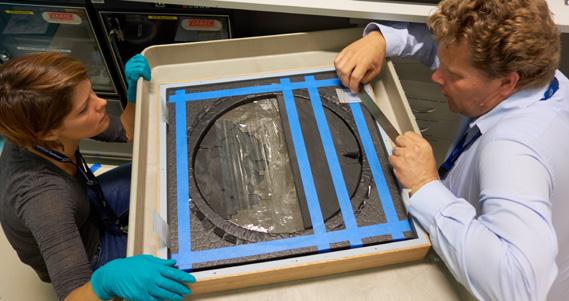
Metals conservator Tamar Davidowitz (above left) from the Rijksmuseum and conservator David Thurrowgood (above right)from QVMAG wanted more detailed information about the condition of the plate in order to best preserve it into the future.
“It is a highly fragile object made up of many different fragments with a complex history of attempted restoration,” explained Howard.
“The technique provides a distribution of the metals in the plate, which might be useful in understanding its history and the corrosion that occurred when it was exposed to the elements on an island in Shark Bay over 80 years.”
Thurrowgood used XRF at the Synchrotron on the de Vlamingh plate (held by the Western Australian Museum) which provided clues as to its origin. (See text at bottom)
A special support was designed to hold the plate in place for transport and scanning.
One of the unexpected findings from the Hartog scans was the discovery of the missing letter ‘p’ from the Dutch word for ship ‘schip’ on the pewter plate.
“There was a great deal of excitement about this finding this character as there was some consternation as to why the letter was missing,” said Howard.
Using XRF the investigators were able to capture the distribution of individual elements on the surface.
“There was a lot of lead which was probably due to the environmental exposure,” said Howard.
“We also found copper, bismuth, and germanium and among many elements in the pewter plate,” said Howard.
The Dutch seafarers used pewter dinner plates hammered flat and engraved with text to leave a record of their voyages.
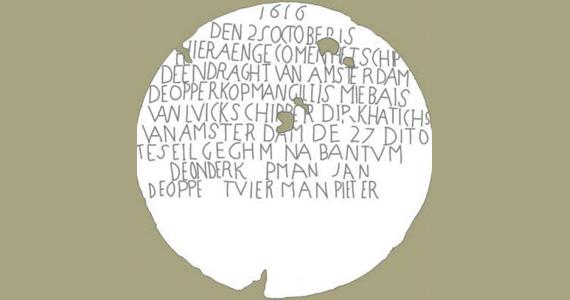
Image courtesy of Western Australian Musuem
The first section of the text on the Hartog plate was deeply engraved but the rest was only lightly scratched in double lines on the surface. Most of the lightly scratched text has largely disappeared.
However, the faded inscription is clearly visible in XRF.
“As nails were used to affix the plate to the post, we can determine what the nails were made of at the time,” said Howard.
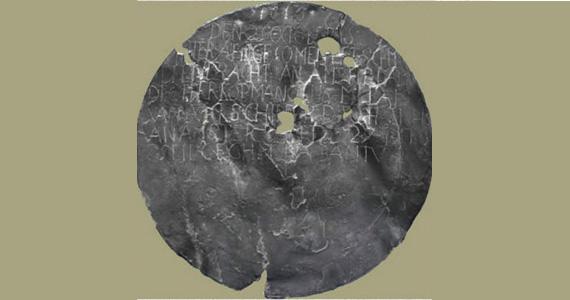
Image courtesy of Western Australian Museum
Ms Davidovitz said that although the plate is not beautiful, it is an important historical artefact , that captures an amazing story.
The Hartog plate is held in the collection of the Rijksmuseum but was exhibited in Australia last year to coincide with the 400th anniversary of Hartog’s expedition.
Dutch expedition leader Dirk Hartog was aboard the Eendracht when it reached Shark Bay (Western Australia) in 1616. He nailed an inscribed ship’s plate to an oak post to commemorate their landing.
Almost a century in 1697 later the plate was recovered by another Dutch expedition led by Willem de Vlamingh. He also left his own plate with of a record of his voyage and copied the inscription from Hartog.